Abstract
1. Twelve healthy male volunteers participated in four experimental occasions during each of which they were dosed with one of the following anti-psychotic drugs: chlorpromazine (50 mg), haloperidol (3 mg), sulpiride (400 mg) and placebo. Drugs were allocated to subjects in a double-blind, crossover fashion. 2. The subject's mood state, psychometric performance and electroencephalogram (EEG) were assessed pre-dose, and at 2, 4, 6, 8, 24 and 48 h post-dose. Mood states were assessed using 16 visual analogue scales and psychomotor performance was measured using the following tests: elapsed time estimation, tapping rate, choice reaction times, a rapid information processing task, flash fusion threshold, a manipulative motor task, digit span, body sway and tremor. 3. Chlorpromazine and haloperidol significantly reduced subjective ratings of 'alertness' and 'contentedness', and haloperidol significantly reduced feelings of 'calmness'. Sulpiride did not significantly affect any of the visual analogue scales. 4. All three anti-psychotic drugs had similar EEG effects with peak effect 2 to 4 h postdose. The profile was characterised by an increase in the proportion of slow wave activity (delta and theta) as well as decreased alpha (8-14 Hz) and faster (beta) wave activity. 5. Chlorpromazine reduced tapping rate and increased choice reaction movement times. Haloperidol reduced the flash fusion threshold frequency at 6 h post-dose. Sulpiride prolonged the duration of the manipulative motor task, particularly at 48 h post-dose. 6. All three anti-psychotic drugs impaired performance on the rapid information processing task. Chlorpromazine significantly reduced the number of correct letter pair identifications at 2, 4 and 6 h post-dose, haloperidol at 4, 6, 8, 24 and 48 h post-dose, and sulpiride at 24 h post-dose.(ABSTRACT TRUNCATED AT 250 WORDS)
Full text
PDF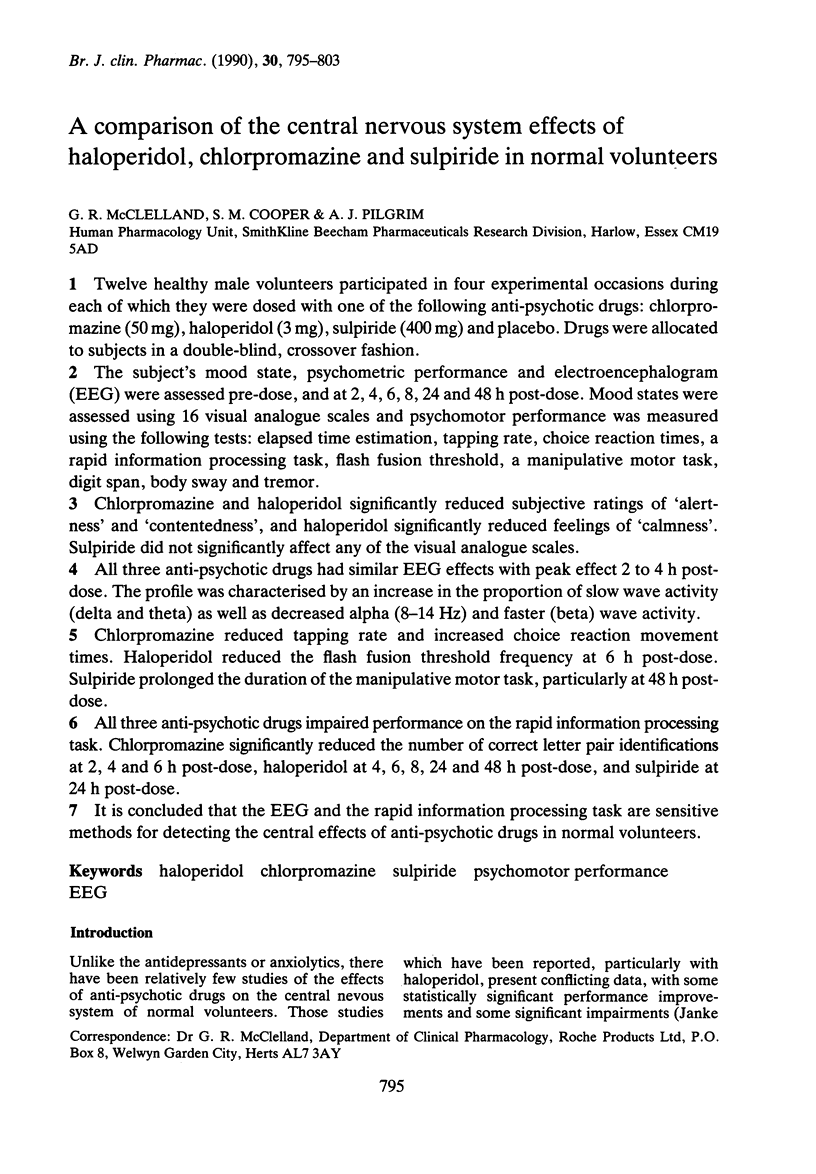
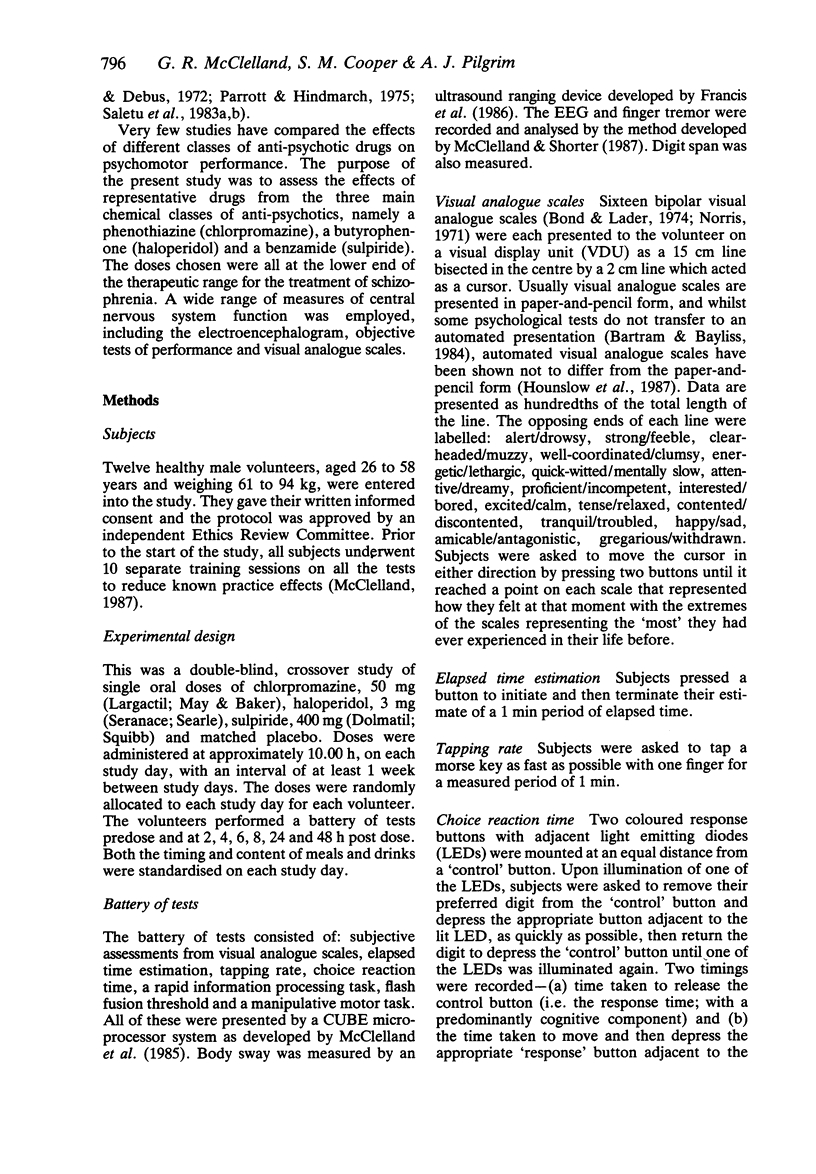
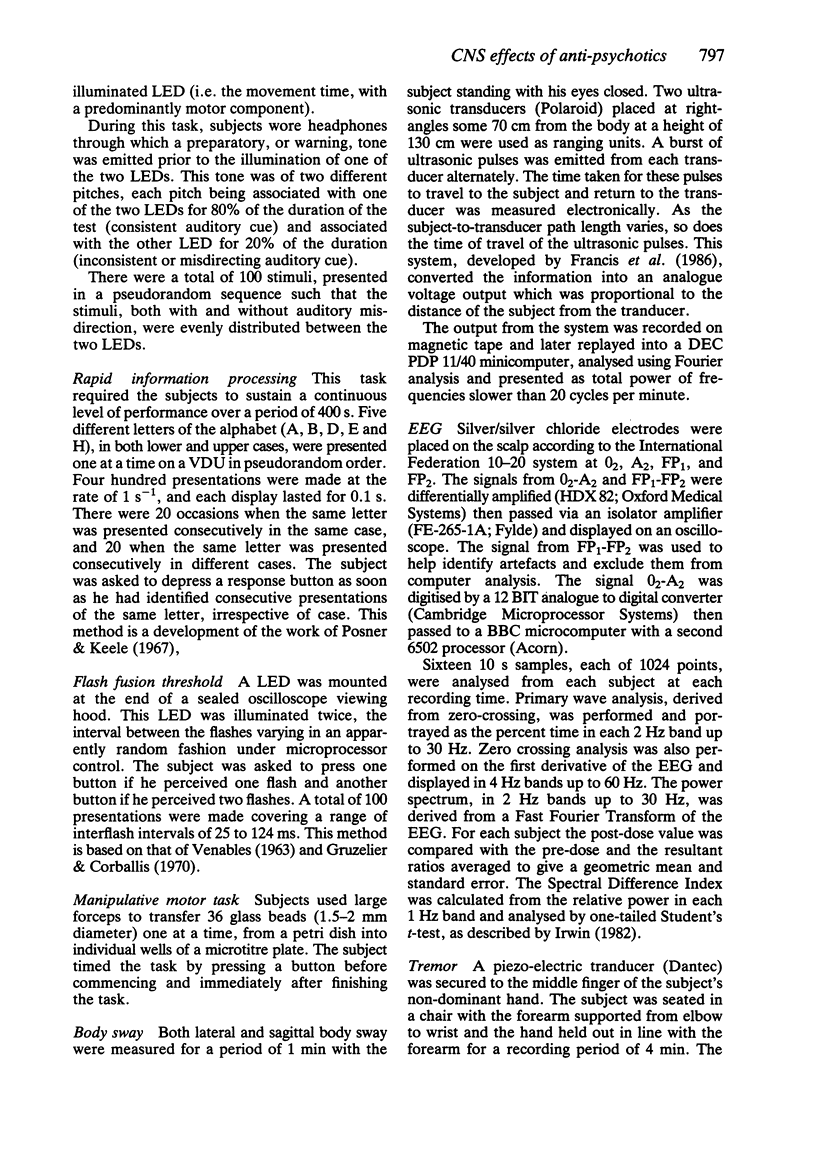
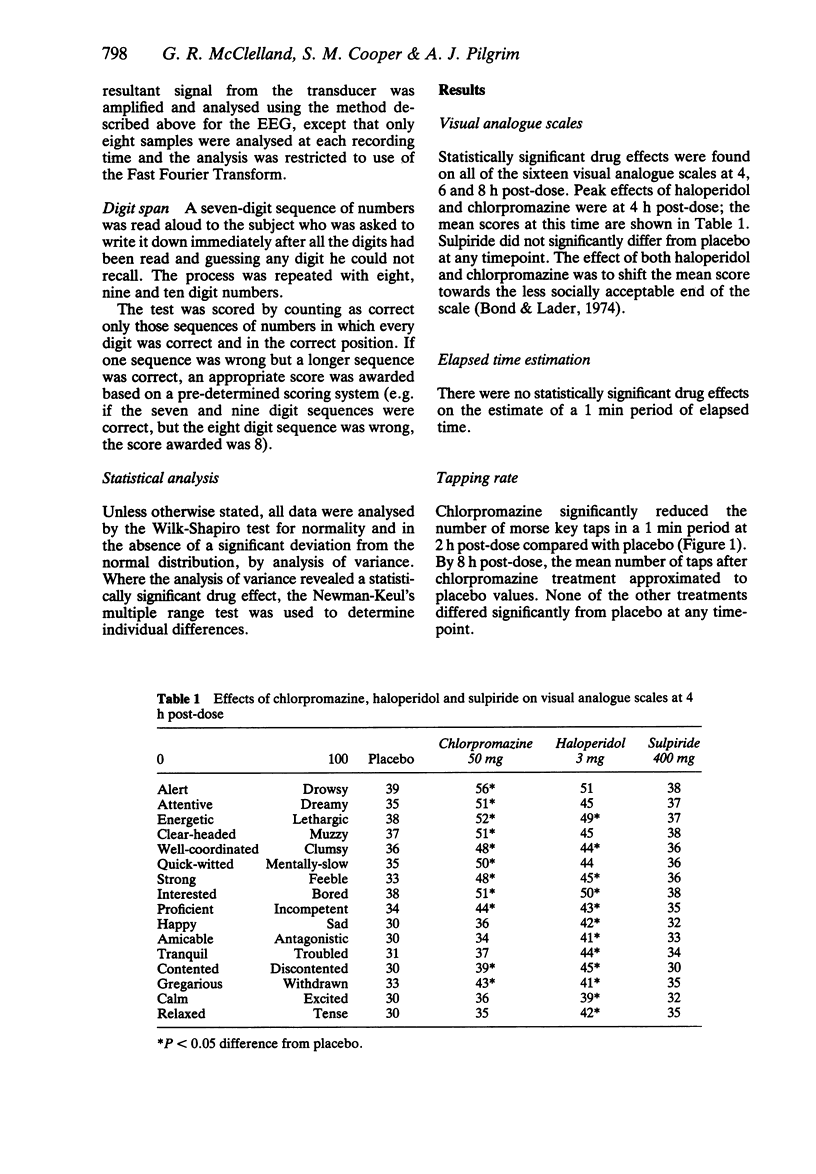
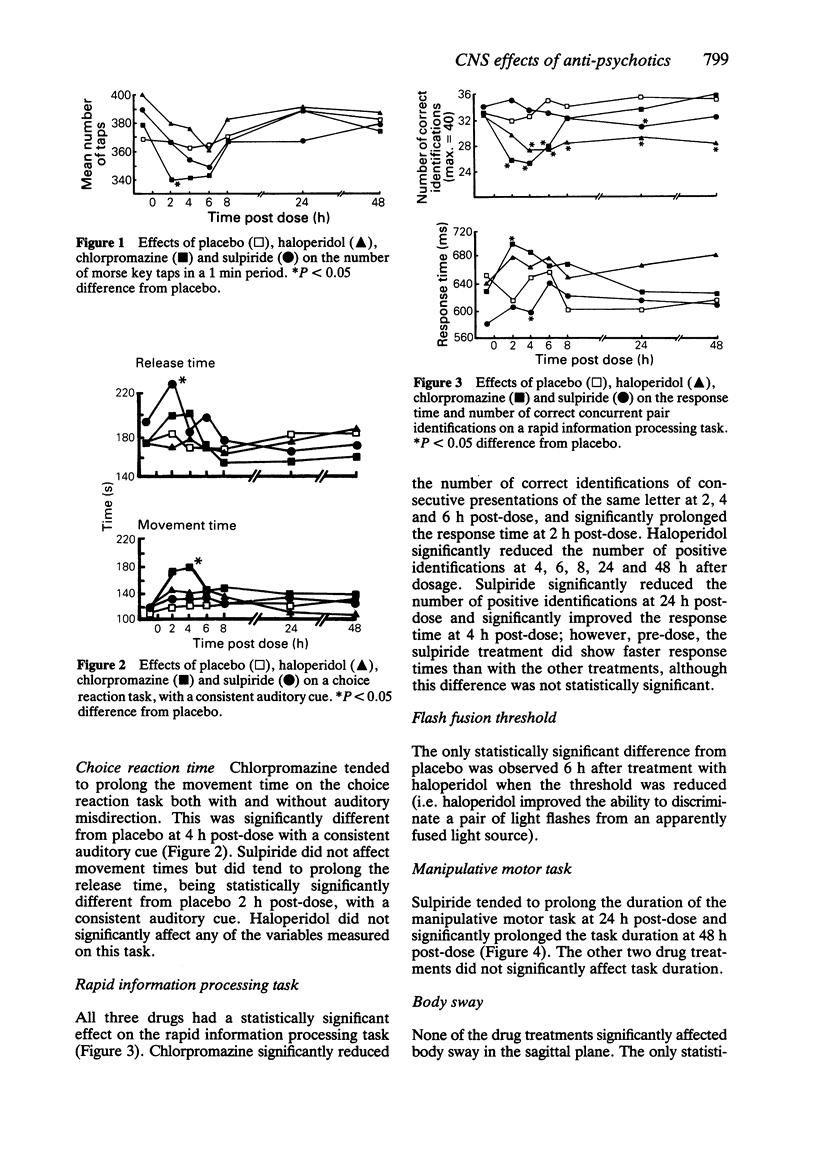
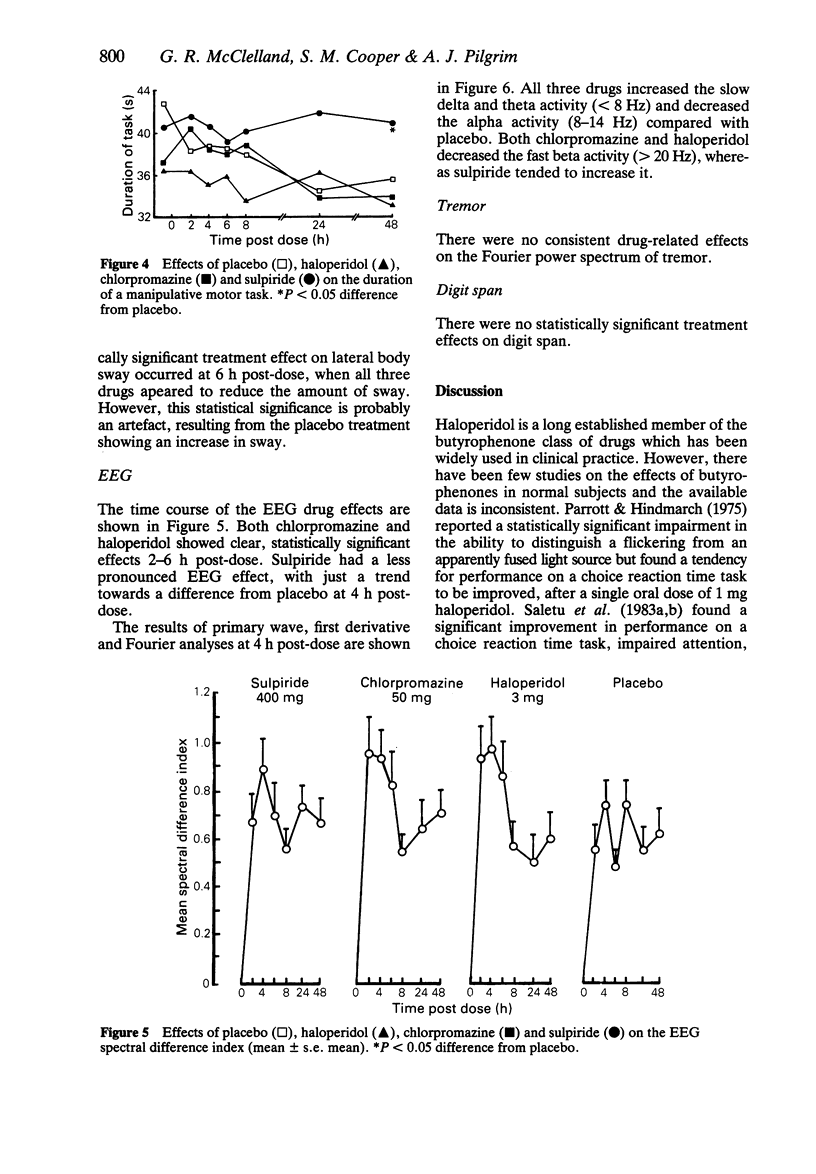
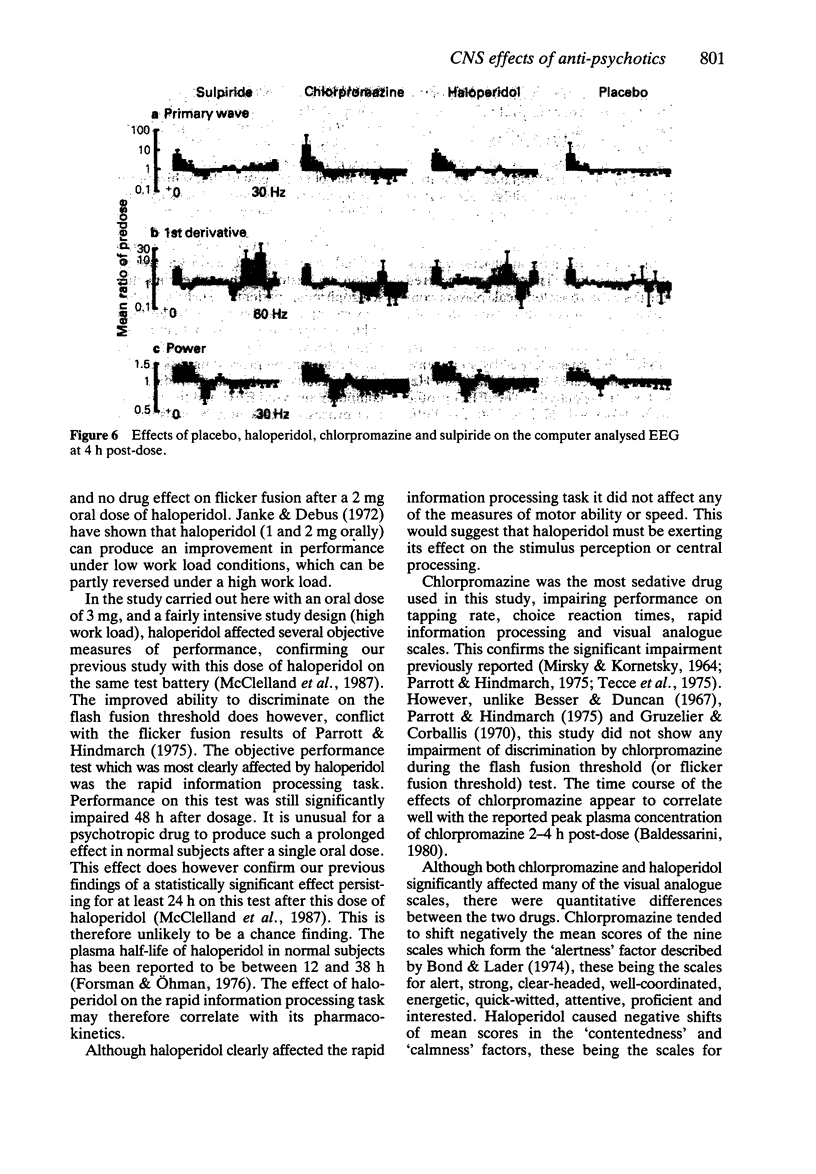
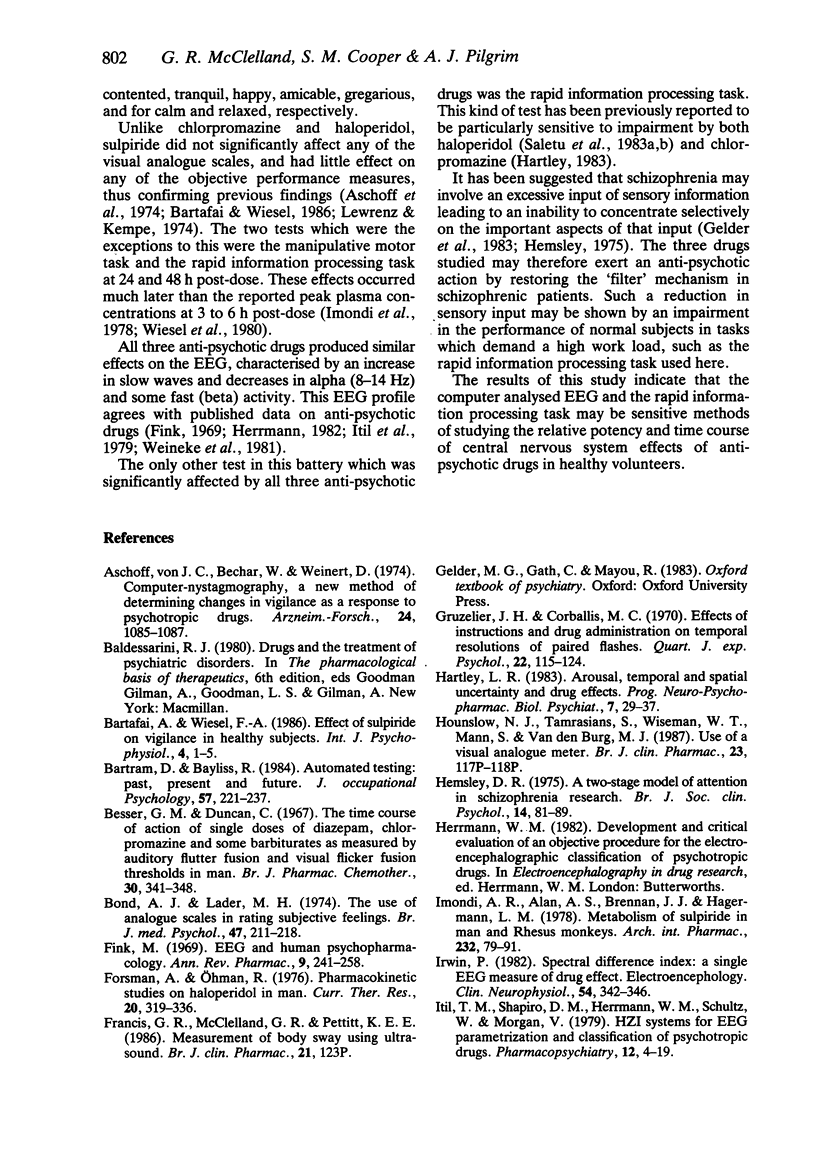
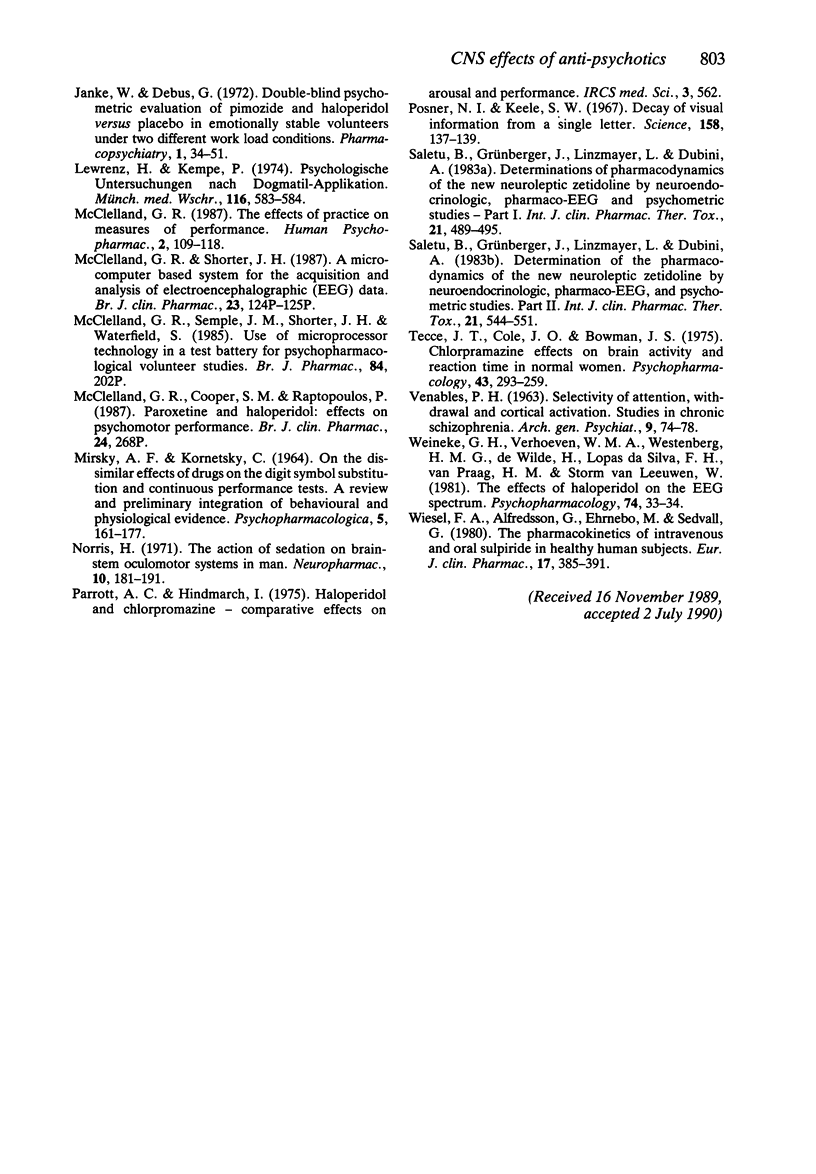
Selected References
These references are in PubMed. This may not be the complete list of references from this article.
- Bartfai A., Wiesel F. A. Effect of sulpiride on vigilance in healthy subjects. Int J Psychophysiol. 1986 May;4(1):1–5. doi: 10.1016/0167-8760(86)90045-0. [DOI] [PubMed] [Google Scholar]
- Besser G. M., Duncan C. The time course of action of single doses of diazepam, chlorpromazine and some barbiturates as measured by auditory flutter fusion and visual flicker fusion thresholds in man. Br J Pharmacol Chemother. 1967 Jun;30(2):341–348. doi: 10.1111/j.1476-5381.1967.tb02140.x. [DOI] [PMC free article] [PubMed] [Google Scholar]
- Fink M. EEG and human psychopharmacology. Annu Rev Pharmacol. 1969;9:241–258. doi: 10.1146/annurev.pa.09.040169.001325. [DOI] [PubMed] [Google Scholar]
- Forsman A., Ohman R. Pharmacokinetic studies on haloperidol in man. Curr Ther Res Clin Exp. 1976 Sep;20(3):319–336. [PubMed] [Google Scholar]
- Gruzelier J. H., Corballis M. C. Effects of instructions and drug administration on temporal resolution of paired flashes. Q J Exp Psychol. 1970 May;22(2):115–124. doi: 10.1080/00335557043000041. [DOI] [PubMed] [Google Scholar]
- Hartley L. R. Arousal, temporal and spatial uncertainty and drug effects. Prog Neuropsychopharmacol Biol Psychiatry. 1983;7(1):29–37. doi: 10.1016/0278-5846(83)90086-6. [DOI] [PubMed] [Google Scholar]
- Hemsley D. R. A two-stage model of attention in schizophrenia research. Br J Soc Clin Psychol. 1975 Feb;14(1):81–89. doi: 10.1111/j.2044-8260.1975.tb00152.x. [DOI] [PubMed] [Google Scholar]
- Imondi A. R., Alam A. S., Brennan J. J., Hagerman L. M. Metabolism of sulpiride in man and rhesus monkeys. Arch Int Pharmacodyn Ther. 1978 Mar;232(1):79–91. [PubMed] [Google Scholar]
- Irwin P. Spectral difference index: a single EEG measure of drug effect. Electroencephalogr Clin Neurophysiol. 1982 Sep;54(3):342–346. doi: 10.1016/0013-4694(82)90184-5. [DOI] [PubMed] [Google Scholar]
- Itil T. M., Shapiro D. M., Herrmann W. M., Schulz W., Morgan V. HZI systems for EEG parametrization and classification of psychotropic drugs. Pharmakopsychiatr Neuropsychopharmakol. 1979 Jan;12(1):4–19. doi: 10.1055/s-0028-1094590. [DOI] [PubMed] [Google Scholar]
- Lewrenz H., Kempe P. Psychologische Untersuchungen nach Dogmatil-Applikation. MMW Munch Med Wochenschr. 1974 Mar 15;116(11):583–584. [PubMed] [Google Scholar]
- MIRSKY A. F., KORNETSKY C. ON THE DISSIMILAR EFFECTS OF DRUGS ON THE DIGIT SYMBOL SUBSTITUTION AND CONTINOUS PERFORMANCE TESTS. A REVIEW AND PRELIMINARY INTEGRATION OF BEHAVIORAL AND PHYSIOLOGICAL EVIDENCE. Psychopharmacologia. 1964 Feb 12;5:161–177. doi: 10.1007/BF00413239. [DOI] [PubMed] [Google Scholar]
- Norris H. The action of sedatives on brain stem oculomotor systems in man. Neuropharmacology. 1971 Mar;10(21):181–191. doi: 10.1016/0028-3908(71)90039-6. [DOI] [PubMed] [Google Scholar]
- Posner M. I., Keele S. W. Decay of visual information from a single letter. Science. 1967 Oct 6;158(3797):137–139. doi: 10.1126/science.158.3797.137. [DOI] [PubMed] [Google Scholar]
- Saletu B., Grünberger J., Linzmayer L., Dubini A. Determination of pharmacodynamics of the new neuroleptic zetidoline by neuroendocrinologic, pharmaco-EEG, and psychometric studies--Part I. Int J Clin Pharmacol Ther Toxicol. 1983 Oct;21(10):489–495. [PubMed] [Google Scholar]
- Saletu B., Grünberger J., Linzmayer L., Dubini A. Determination of pharmacodynamics of the new neuroleptic zetidoline by neuroendocrinologic, pharmaco-EEG, and psychometric studies: Part II. Int J Clin Pharmacol Ther Toxicol. 1983 Nov;21(11):544–551. [PubMed] [Google Scholar]
- Tecce J. J., Cole J. O., Savignano-Bowman J. Chlorpromazine effects on brain activity (contingent negative variation) and reaction time in normal women. Psychopharmacologia. 1975 Sep 17;43(3):293–295. doi: 10.1007/BF00429268. [DOI] [PubMed] [Google Scholar]
- VENABLES P. H. Selectivity of attention, withdrawal, and cortical activation. Studies in chronic schizophrenia. Arch Gen Psychiatry. 1963 Jul;9:74–78. doi: 10.1001/archpsyc.1963.01720130076008. [DOI] [PubMed] [Google Scholar]
- Wieneke G. H., Verhoeven W. M., Westenberg H. G., de Wilde H., Lopes da Silva F. H., van Praag M., Storm van Leeuwen W. The effects of haloperidol on the EEG spectrum. Psychopharmacology (Berl) 1981;74(1):33–34. doi: 10.1007/BF00431753. [DOI] [PubMed] [Google Scholar]
- Wiesel F. A., Alfredsson G., Ehrnebo M., Sedvall G. The pharmacokinetics of intravenous and oral sulpiride in healthy human subjects. Eur J Clin Pharmacol. 1980 May;17(5):385–391. doi: 10.1007/BF00558453. [DOI] [PubMed] [Google Scholar]


